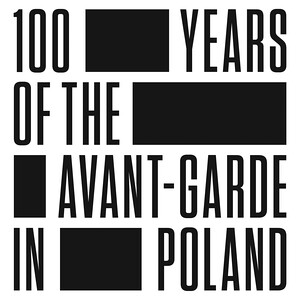The Museum of Rhythm
November 18, 2016–March 5, 2017
Wieckowskiego 36 St.
90-734 Lodz
Poland
Hours: Tuesday 9am–4pm,
Wednesday–Sunday 12am–6:30pm
Exhibitions, a series of publications, conferences, and events connected with the tradition of “new art for a new man”—this is how the Muzeum Sztuki in Łódź will commemorate the 100th anniversary of Polish avant-garde. On this occasion we will recall the relevance of the avant-garde art movement for the development of visual arts, literature, film, and theatre; we will show how important Poland was as the centre of the avant-garde and how vivid its traces are in the oeuvre of contemporary artists.
This year two exhibitions will open at the Muzeum Sztuki, both inspired by the notions of rhythm and time-space in Katarzyna Kobro’s art and Władysław Strzemiński’s writings.
The first exhibition, Moved Bodies. Choreographies of Modernity, asks questions concerning the corporeal and kinaesthetic experience of modernity, with Katarzyna Kobro’s artworks and theories—which will be shown in the context of choreographic practices of her contemporaries—as the starting point. The exhibition raises a question about the bodily and movement-related experience of modernity. The objective of the exhibition is to confront Katarzyna Kobro’s oeuvre with choreographic and dance practices of the first half of the 20th century, building up the context for Kobro’s artistic and theoretical practice. Similarly to female modernist dancers and choreographers, Kobro posed questions in her theoretical works about the nature of movement and its spatial relations.
The exhibition layout was arranged in cooperation with an opera and dramatic theatre stage designer, Karolina Fandrejewska. Instead turning to architecture, she proposes the scenography creatively appropriated from the archive material, which serves as an inspiration for performances by artists, such as Tomasz Bazan, Maria Zimpel, the Noa Eshkol Chamber Dance Group, and Noa Shadur. The exhibition and all accompanying events are curated by Katarzyna Słoboda and produced by Monika Wesołowska with the help of Katarzyna Mróz. The exhibition will be accompanied by the international research conference “How does the body think? Corporeal and movement-based practices of modernism” with the participation of renowned dance scholars such as Susan Maning, Mark Franko, and Felicia McCarren, among others.
The second exhibition experiments with the very structures of temporality. The Museum of Rhythm, opens on November 25, 2016 till March 5, 2017. The project initiated by Natasha Ginwala as part of the Taipei Biennial 2012, is presented in an extended version with a new range of artistic works, films and archival documents in collaboration with Daniel Muzyczuk, and will be on view at ms1. The Museum of Rhythm is a speculative institution that engages rhythm as a tool for interrogating the foundations of modernity and the sensual complex of time in daily experience. When entering a larger cultural infrastructure such as the art museum, it juxtaposes modern and contemporary art with ethnographic research, cinema, music, and scientific instruments to set in resonance a critical apparatus and conduct exercises in Rhythmanalysis. This exhibition is an outcome of durational research that sees art as one of the means by which the ideologies of rhythm are implemented.
Artists and contributors: Lawrence Abu Hamdan, Ericka Beckman, Erick Beltrán, Alessandro Bosetti, Hanne Darboven, Juan Downey, Nicola Durvasula, Simone Forti, Frank B. Gilbreth & Lillian M. Gilbreth, Milan Grygar, Francisco Camacho Herrera, Åke Hodell, Robert Horvitz, Channa Horwitz, Toshi Ichiyanagi, Ken Jacobs, Hassan Khan, Katarzyna Kobro, György Ligeti, Alan Lomax, Barbara McCullough, Angela Melitopoulos, Alexandra Navratil, The Otolith Group, Jean Painlevé, Bernard Parmigiani, Alain Resnais, Lis Rhodes, Hans Richter, Jimmy Robert, Jean Rouch, Gerhard Rühm, Nicolas Schöffer, Paul Sharits, Yashas Shetty, Wadada Leo Smith, Nancy Spero, Wacław Szpakowski, Suzanne Treister, Stephen Willats, Andrew S. Yang, Samson Young
Curators: Natasha Ginwala, Daniel Muzyczuk
Curatorial Assistant: Krisztina Hunya
Exhibition Architect: Maciej Siuda


